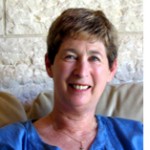By Dorothea Shefer-Vanson

TARABIN, Israel — Tucked away on the edge of this village, named for the Bedouin tribe that inhabits it in southern Israel, is a farm whose sole objective is to produce camel’s milk. For that purpose some fifty female camels are kept in pens to be ‘serviced’ by a single lucky male camel during the breeding period. The mothers are then milked and the product bottled and packaged for delivery to customers all over Israel. Reportedly, both the milk and the cream produced using it have been scientifically proven to have generally beneficial and medicinal properties.
We had set out on a seemingly routine excursion to sites of interest in southern Israel and also to see the ‘red carpet’ in the fields produced by the flowering of thousands of wild poppies. But as sometimes happens, the day of our trip turned out to be rainy and cloudy, yes, even in the Negev, the traditionally arid south of Israel, so that the poppies were closed. Apparently, this year has witnessed the freak phenomenon of more rain in the south of the country than in the north, upsetting the usual course of climatic events, but producing wonderful green vistas as far as the eye can see in the south. You might think you were in a European country when on all sides are green fields and gently rolling hills and valleys.
Seated in rows facing the camels, our group, consisting of some fifty retired residents of Mevasseret Zion, was treated to an edifying lecture by Eyal, the manager of the farm and a chemist with extensive knowledge of the intricacies of the various ailments that flesh is heir to. Along with a warming cup of (milkless) tea or coffee, we were given an extensive account of what he said are the wondrous properties of camel’s milk. Since the chemical composition of camel’s milk is very close to that of human mother’s milk, this enables it to make a valuable contribution to the human immune system.
According to Eyal, in conjunction with a healthy diet camel’s milk helps to combat diabetes, heart disease, illnesses of the joints and lungs, ailments of the digestive system, specifically colitis, Crohn’s disease and gastritis, skin diseases, osteoporosis and illnesses associated with old age, allergies, and certain types and stages of cancer. He said it can even be used to allay the symptoms of ADD and ADHD in children as well as having a significant effect on some kinds of autism. Anyone wishing to order milk or who is in doubt as to whether camel’s milk is the most appropriate treatment for their particular medical problem is invited to call the farm for a free phone consultation (077-3295116; 077-5560212). There is also a website: www.camels-milk.com
As we sat listening to the lecture we were treated to the sight (and smell) of the fifty or so female camels and their babies, who gamboled and sprang about among the adult females, each one eventually returning to its own mother. The single male was tied up at the side, and Eyal was at pains to point out that there could only be one male to the herd as more than one would inevitably give rise to a fight for supremacy.
At the end of the lecture we were all given a little cream on a small stick and encouraged to smooth it onto any part of our body that was giving us pain. I was in no pain and so declined this offer, but there were some people who did so and who claimed that the cream did indeed allay their pain, even if only temporarily. Even if it doesn’t reduce pain, the cream is supposed to be good for the skin and even to have an anti-aging effect while also serving as a sunscreen. Hardly surprising, then, that many people, myself included, bought a pot of the cream to take home.
The farm is open to visitors and we were all encouraged to return with our families at the weekend and be assured of a warm welcome.
*
Shefer-Vanson is an author and freelance writer based in Mevasseret Zion, Israel. She may be contacted via dorothea.shefer@sdjewishworld.com. Comments intended for publication in the space below must be accompanied by the letter writer’s first and last name and by his/ her city and state of residence (city and country for those outside the U.S.)